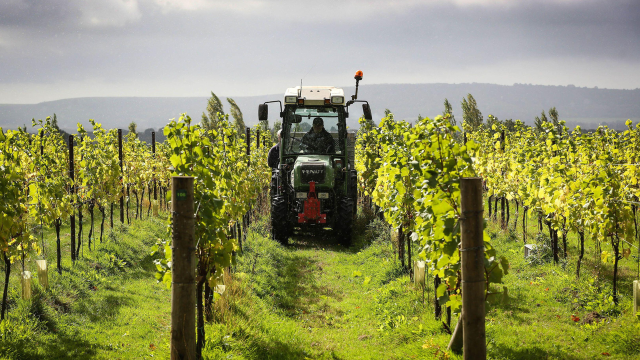
English fizz “chalked up” a milestone victory over its “rivals across the Channel” earlier this month when a bottle of Nyetimber’s Blanc de Blancs became the first sparkling wine from outside Champagne to scoop a prestigious prize at the International Wine Challenge ceremony, said The Telegraph.
In a historic first, the producer, based across Sussex, Hampshire and Kent, took home the Champion Sparkling Wine Daniel Thibault Trophy for its Blanc de Blancs 2016 magnum. Judges described it as a “time capsule of a wine”, said London’s The Standard, bursting with “mouth-watering acidity, citrus zest and camomile”.
The brand is a “favourite of the royal family” and its winning entry is the product of a warm growing season in 2016, which, added to its five years on the lees, has created a “complex” wine. Expect “biscuity notes”, with a hint of brioche and “aromas of warm peaches and candied lemon”.
This isn’t the first time UK sparkling wine has demanded attention. British fizz has been bounding from “strength to strength”, attracting a raft of “awards and accolades” in recent years, said The Independent. In many cases, even to the most sophisticated oenophile, certain bottles produced in Essex, Sussex, and even South Wales can be considered superior to “those made in Champagne”.
The three classic champagne grapes – chardonnay, pinot noir and pinot meunier – that “thrive” on similar chalk-based “south-facing” French vineyards are also cultivated on this side of the channel and the wine is made using the same “méthode traditionelle”.
The future for the British sparkling industry is bright, said The Times. Our climate is suited to producing “naturally green, lean, high-acid wines”, which is a staple of the “finest fizz”, giving the wine its unique selling point. Higher quality yields in the UK tend to have come from temperate, “frost-free 2014, 2015 and 2020 vintages”, backed up by “long, warm, quality-enhancing autumns”.
Our cooler climate (relative to Champagne) when the vintage is on song creates “a delightful tingling acidity, and super-fresh, zesty fruit flavours”, which is near-impossible to find in “mass-produced” or “hot-region” wines, said The Telegraph. To get the most out of British sparklers, pair them with “light, savoury food”, “mild cheeses” and “creamy pasta sauces”.
Most importantly, a lot can be done to enhance a British sparkling wine before the bottle has even been opened. Chill to a temperature of around 8-10 Celsius to preserve the “elegant aromas” and “fresh-as-a-daisy flavours” and once opened, drink within three days, should you resist the temptation to down it straight away.
If you don’t want to shell out on Nyetimber’s prize fizz, Morrison‘s The Best English Sparkling is less than half the price. With creamy citrus notes, and “rumoured to be made by a very prestigious winemaker”, it’s “surprisingly rich”, said The Guardian.
As UK-based brands give champagne a run for its money, here’s everything you need to know about choosing the right bottle




